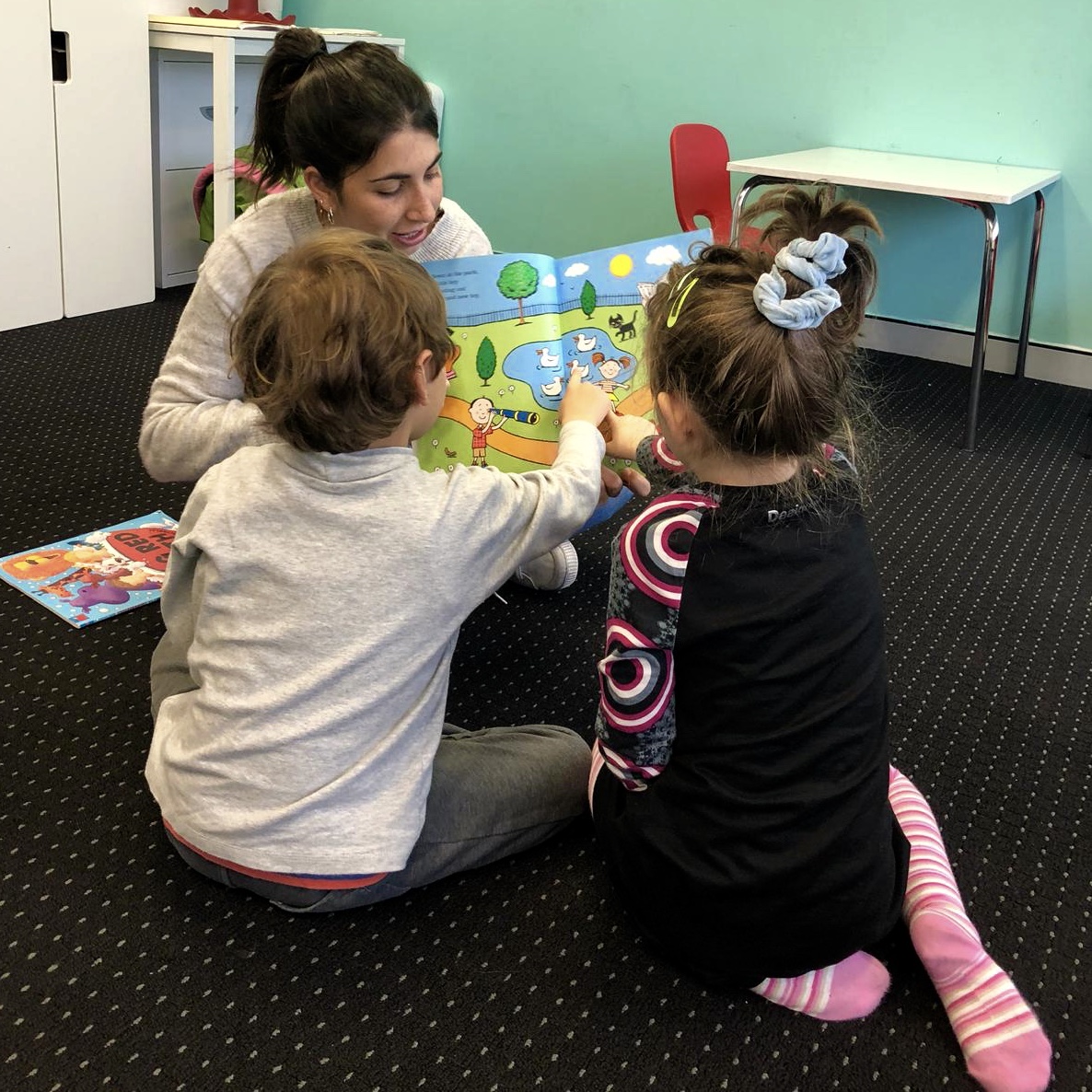
How do children learn to talk?
Children learn to talk by hearing other people talk. They hear all the people all around them talk. This process of listening to other people talk starts from the day they are born. Their little brains are hard wired to take in sounds and words from the very beginning.
When children need help learning to talk, the people they spend the most time with are the ideal people to do this. They can learn strategies from Speech Pathology sessions and apply these strategies to everyday activities. One session of Speech Pathology each week isn’t enough to make the changes your child needs. However, integrating suggestions from the Speech Pathologist across the whole day will! Children constantly listen, analyse, and storing the sounds and words they hear until they start to use it!
Speech Pathology strategies to use at home
These are strategies that you can use at home to help your child learn to talk.
Self Talk
Talk about you are doing. Use short phrases or sentences to describe each step of what you do. Your Speech Pathologist can tell you exactly how many words to use in each phrase.
Here is an example of self talk:
- “I see dirty clothes”
- “Pick them up”
- “Open the door”
- “In the washing machine”
- “Put the powder in”
- “Turn it on”
- “It spins round and round”
Lift you child up and get them to help you with each step as you ‘self talk’. Do this at home and do it when you go out. It may look strange to other people, but your child gets so many language learning opportunities. Before long, it will feel very natural to ‘self talk’. The Speech Pathologist can also tell you what types of words to target when you do this.
Parallel talk
Parallel talk is very similar to self talk. However, you talk about you see around you. You talk about things you see, things you hear, and things that are people are doing. In ‘self talk’ you only talk about what you are doing.
Here is an example of parallel talk:
- “I see play dough”
- “red playdough”
- “open the playdough” (as the child opens it)
- “squish the play dough” (as the child squishes it)
- “make a star”
- “you have a red star”
- “it’s a rolling pin”
- “roll the playdough” (as the child rolls it)
Expansions
To use expansions, you repeat what your child says but you add more grammar to the sentence to make it ‘adult like’. You are only adding more grammar, you aren’t adding more information about the word that the child used.
Here are some examples of expansions:
- Child points to the sky and says “plane”. You point to the sky and say “Yes, it’s a plane”
- Child says “blue car”, and you say “The blue car is driving”
- Child says “him turn”, and you say “it’s his turn”
When you include what your child has already said then you acknowledge that what your child said was important. When you ‘to-and-fro’ between each other, this builds the basis of a conversation and encourages your child to keep describing things to you. As they do this, they learn more language.
Extensions
These are similar to expansions. You repeat back what the child said, but you add new information to what they said. Let’s look at the same example:
- Child points to the sky and says “plane”. You point to the sky and say “The plane is flying”
- Child points to a car and says “blue”. You say “The car is blue”
- Child says “blue car” and you say “The blue car is driving”
Repetition
You use this strategy when you want to help your child say their sounds correctly. Children have to be using at least single words.
- The child says “wabbit” and you repeat the word but you say “rabbit’ and stress the ‘r’ sound.
- The child says “montey”, and you repeat the word “monkey’ and stress the ‘k’ sound.
How do I model language without asking questions?
Our Speech Pathologists often help parents practice this. Many parents do the following:
- “Look, it’s a car”
- “What colour is it?”
- “How many wheels does it have?”
Describe more things about the car:
- “Look, it’s a car”
- “It’s a red car”
- “A fast, red car”
- “I can see four wheels…1,2,3,4”
- “It’s driving on the road”
Questions don’t help young children learn to talk. In fact, children who need help learning to talk learn best when you describe or comment. You are modelling language. This is not the time to be asking questions.
When do I use these strategies?
Start using these strategies with your child when they are a baby. Don’t wait until they start talking. Use them from birth.
Use them in a natural way when your child is motivated. When your child’s shows interest in something, they will listen more to what you say.
These Speech Pathology strategies do not come naturally to every parent. That’s ok! Keep practising and it will feel more natural.
For more information about late talkers, Speech Pathology Australia has more information here.
What should I do if my child still doesn’t talk more?
Speak to one of our Speech Pathologists . OneOnOne Children’s Therapy is an early intervention clinic and we have clinics in Bondi Junction and Mascot. Our Speech Pathologists can help you learn how to teach your child to talk. They can advise you about a Speech Pathology assessment and the best thing to do for your child’s talking. We can be contacted on (02) 8065783 or email us.
